Calvin Klein Advertising Strategy - A Symbol of Sexiness
Calvin Klein is an $8.4 billion global fashion company that has been on the market for over 50 years. During this time, the brand has been marketing to fashion lovers with simplistic and provocative marketing campaigns that no one can take their eyes off of. Calvin Klein has continued to shock the audience and maintain a strong following while entering the digital age gracefully.
So, what can you learn from Calvin Klein? Do you want to achieve the same fame and fortune as a fashion brand? Then you would need to get used to controversies and celebrities’ collaboration. In this article, let’s find out about the marketing secrets of Calvin Klein - a fashion symbol of sexiness. Remember, nothing should come in between you and Calvin Klein’s advertising strategy.
Calvin Klein introduction
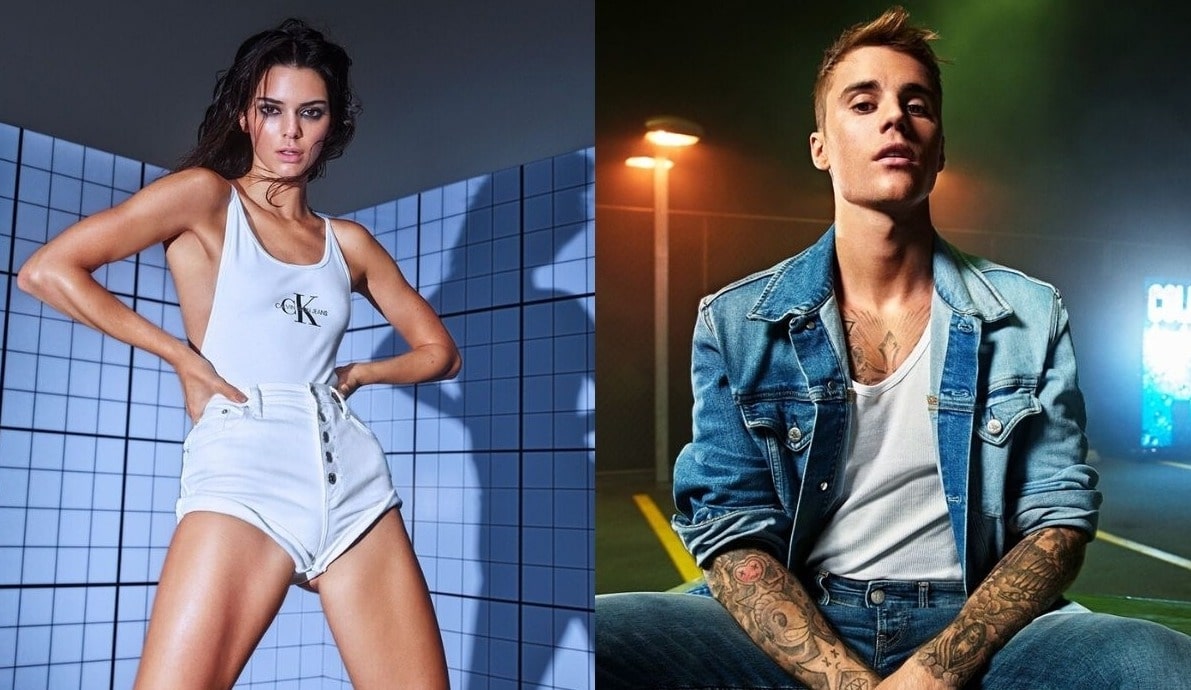
Calvin Klein Incorporated, known worldwide by the brand name Calvin Klein, was founded in 1968 by Calvin Richard Klein in New York City, USA. It is one of the most famous fashion brands in the world with a significant presence in many categories, such as leather wears, lifestyle accessories, fragrances, household furniture, watches, and luxury products.
Calvin Klein is currently owned by Phillips Van Heusen Group (PVH) and is based in Manhattan, New York. The brand primarily aims at the affluent middle class and positions its products as exclusive works of high-end designers, which are promoted by supermodels and celebrities all over the world.
Starting as a bold idea, Calvin Richard Klein borrowed his friend Barry K.Schwartz a small capital of 10,000 dollars, to open a suit shop at the famous York Hotel in New York. By the late 70s, Calvin Klein’s annual revenue increased to 30 million dollars annually. He also purchased a license to sell a range of other fashion items in addition to his main design lines, including scarves, furs, shoes, belts, sunglasses, and even bed sheets. Men’s casual wear and casual jeans were added to the product line later, which further increased his annual sales.
The brand’s signature jeans created a big stir in the fashion market, with sales of more than 200,000 units on the day of launch. The company also launched its lines of cosmetics and perfumes during this period. Calvin Klein then gained worldwide fame by revolutionizing the concept of men’s underwear through innovative promotions and introduced the style in a daily-used product.
Calvin Klein’s most famous advertising campaign was released in 1980: An only thirty seconds long ad introducing a 15-year-old Brooke Shields, flirtatiously looked into the camera and said: “Do you want to know what comes between me and my Calvins? Nothing”. The company created a global phenomenon again in the early 90s with an ad featuring Mark Walhberg and Kate Moss introducing the newly-designed boxers.
Read more:
- Lululemon Marketing Strategy
- M&M’s Branding Strategy
- Toyota Marketing Strategy
- Kate Spade Advertising Strategy
Calvin Klein SWOT analysis

In over 50 years, Calvin Klein has built its credibility as a trendsetter in the fashion industry. In this section, let’s see the Strength - Weakness - Opportunities - Threats of the brand to get a better look at the company’s circumstances.
Strengths
Calvin Klein is a famous brand, and its products are sold in many countries around the world. However, their main market is the United States accounting for about 58% of total sales. Other top markets for market share are Europe and the Asia Pacific. Recently it also opened a series of stores across the Middle East.
Presence in many fashion fields: Calvin Klein’s main products are ready to wear clothes for men and women. In addition, they also have perfumes and accessories such as eyewear, watches, jewelry, and shoes for both men and women. There are also exclusive furnishing and furniture product lines.
Controversial marketing: One reason for the Calvin Klein brand’s incredible popularity is its smart marketing strategy and advertising campaigns. The brand often uses sexual ads to draw attention to their products. Through the ads, Calvin Klein can stay in their target segments’ minds and often succeed in building a bold image for the brand, which suits the young generation very well.
Weakness
Image management: Calvin Klein has always been famous for being an outstanding brand with a quirky style and creative design. In addition to existing global design brands, many prominent local designers are making a come up in the digital age, so Calvin Klein has to work hard to maintain its unique image in the market.
Synergy: Licensing forms an important part of the Calvin Klein business model, and the company finds it difficult and costly to coordinate their licenses, which are spread across the world.
Ethics: Calvin Klein has always been seen as a controversial brand and criticized for its sexualized materials. In addition, the brand also faces licensing issues.
Opportunities:
Children’s market: As urban residents have more money to spend, many designer brands are turning to design clothes and other goods for children. This could be a potential market for a well-known brand like Calvin Klein.
Threats:
Competition: The main competitors of Calvin Klein are Tommy Hilfiger, Dolce & Gabbana, Gucii, etc. They are all global fashion brands with unique styles, so it will be hard to stand out as just jean products.
Calvin Klein marketing mix analysis

Calvin Klein’s marketing mix analyzes the brand with 4Ps (Product, Price, Location, Promotion) and explains Calvin Klein’s marketing strategy. Many marketing strategies such as marketing investment, product/service innovation, customer experience, etc. have helped the brand grow.
Product strategy
The first products launched by the Calvin Klein brand in 1971 were underwear, coats, skirts, shirts, pants, sportswear. The elegant designs gave the products a unique quality that has become very popular. Sunglasses, belts, fur, scarves, and shoes were later added to the collection. In the late 1970s, Calvin Klein restarted the jeans collection and gave it a firmer shape, becoming an instant classic. Later, the company also made coats, skirts, and shirts in jeans. The product collection is stylish, comfortable, and suitable for daywear.
These products have created a trademark for Calvin Klein products. In 1978, the brand introduced a makeup collection with 18 products for skincare and beauty. In the 1980s, the company launched a collection of men’s underwear and boxer shorts for women. In 2013, PVH acquired Calvin Klein and helped unite the jeans, underwear, and sportswear products under a single group.
Place strategy
Calvin Klein has a strong presence in the international market. The first store was established in Dallas, which included products such as apparel, perfumes, cosmetics, accessories, household linen, etc. Currently, the brand has a flagship store at Madison Ave in New York. Outside of the United States, it is present in 21 countries. In addition, they also sell their products in department stores. High-end department stores like Bergdorf Goodman, Saks Fifth Avenue, and Neiman Marcus all have the Calvin Klein collection.
Some small shops also have Calvin Klein products, but not many. In Asia, Calvin Klein mainly focuses on fragrances, underwear, and collections that are suitable for people’s income levels. Because Calvin Klein has both online and offline stores, it has developed distribution channels accordingly to make its products available all the time, so there is less chance of brand switching among customers.
Price strategy
Calvin Klein products’ price is usually higher because it markets its products to the middle and upper classes. Its designer clothes and accessories often cost more than basic clothes products on the market. Calvin Klein’s main competitors are Giorgio Armani, Hugo Boss, Ralph Lauren, Tommy Hilfiger, etc. and it tries to keep prices a bit lower than the competitors to gain market share. With this pricing strategy, it can successfully attract customers’ attention and gain popularity. It has a target price strategy to compete with other players by setting its price a bit lower than them and trying to reduce costs to earn more profits. Thanks to this, customers tend to stick with the brand and become loyal customers.
Products of Calvin Klein are also available to purchase online with frequent deals and discounted prices for old stock, thereby leading to higher numbers in sales. The premium products are sold under a “black label” line, which targets high-end customers. These products have high-profit margins but are often sold in smaller quantities.
Promotion strategy
Calvin Klein often promotes their products to customers on many channels including TV, direct marketing, social media, promotions, sales campaigns, and personal selling. With the development of the Internet, social media, and technology, Calvin Klein has used new areas to advertise their products and generate a large number of sales. Calvin Klein is well-known for controversy in advertising campaigns. TV ads used underage actresses were considered inappropriate and “sex sells”. It created negative public opinion among viewers and some even hated the brand.
Like many other brands, Calvin Klein also uses famous celebrities to showcase their products in ads. Some of the names are Mark Wahlberg, Kate Moss, Eva Mendes, Scarlett Johansson, and Alexander Skarsgård. Recently, we have also seen Justin Bieber and Kendall Jenner promoting the Calvin Klein underwear products. To establish the brand, Calvin Klein products often have the initials CK on them. The brand also uses email marketing to establish a connection with the recipient and send information about new products or promotion.
Calvin Klein advertising strategy
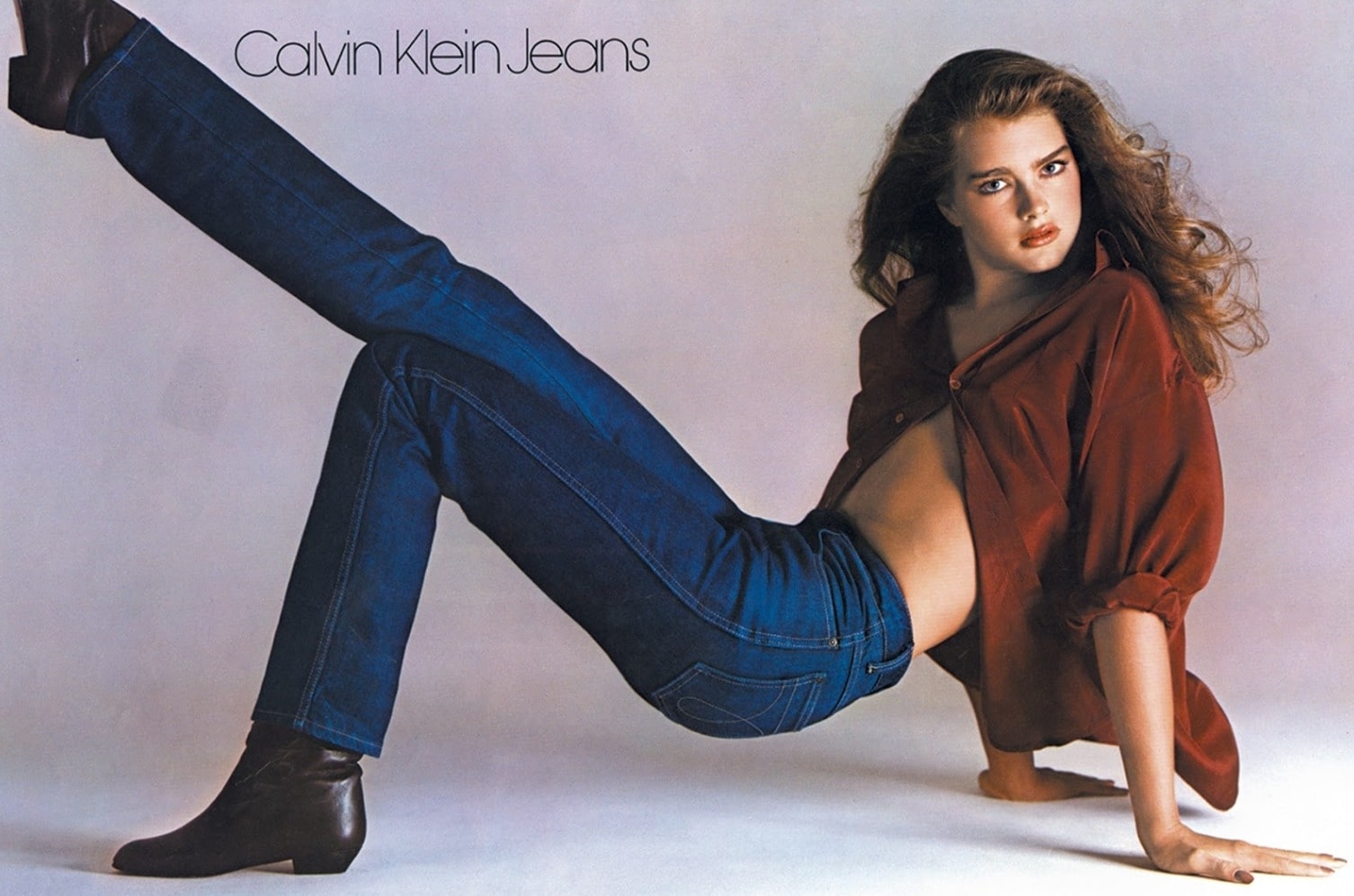
The core elements of Calvin Klein advertising strategy can be listed below:
It is not afraid of making provocative campaigns
In 1980, Calvin Klein shocked TV audiences by showing a series of ads that featured a 15-year-old Brooke Shields - who seductively told the viewers that nothing came between her and her Calvins. This sparked major controversy at the time, making the brand one of the most talked brands in the year. But, Calvin Klein didn’t stop there. It embraces its controversial reputation and keeps releasing more provocative ads.
The brand has constantly released ads featuring sexy movie stars or supermodels wearing underwear only. One of the most famous campaigns involved Kate Moss in the 90s and being almost naked. Her co-star was Mark Wahlberg, who grabbed his junk and said his Calvins underwear kept him snug. Kate Moss appeared once again, promoting Obsession perfume, this time being naked.
In 2009, Eva Mendes stepped in to promote the fragrance line of Secret Obsession, while being naked in bed. Not surprisingly, the ad was banned. In 2015, Justin Bieber modeled in the #mycalvins campaign. This caused a lot of controversies because some people think that his image has been overly Photoshop-driven.
By living with the controversial reputation, Calvin Klein is able to create buzz on the press and social media, as well as among target customers.
It uses controversy as a tool to promote the brand’s personality
In 2016, Calvin Klein released photos of a sexually explicit ad for its #MyCalvins campaign. The one which attracted a lot of attention was with actress Klara Kristin revealing her upskirt.
The campaign caused online outrage and created countless negative comments. Thousands of people went on Instagram, Twitter, and Facebook to leave bad comments about the company. To add more fuel to the fire, news outlets such as Breitbart, Fox News and The Blaze all criticized the brand.
In response, Calvin Klein declined to comment and kept the campaign photos online. It continued to become a popular topic on social media and the press, while the brand successfully received the attention it needed. The reaction also showed the brand’s personality of being unafraid, which is very relatable for young audiences. How many brands that can be so bold under negative comments?
It uses social media influencers and celebrities
In 2014, the notorious #mycalvins campaign exploited social media influencers and social media celebrities to promote the Calvin Klein collection. The brand sent products to fashion well-known names like Fergie, Aimee Song, Emily Weiss and many others. Each of the influencers posted photos of themselves wearing Calvin Klein underwear in homes and hotel rooms.
Shortly thereafter, thousands of people followed and uploaded their own photos with the hashtag #MyCalvins. As a result, the campaign earned 4.5 million interactions on social media. Thanks to this, Calvin Klein gained an enormous amount of exposure among young audiences, the main users of social media at the time.
Calvin Klein noteworthy advertising campaigns
Most Calvin Klein marketing campaigns are provocative, but that is one of the reasons why the brand became a symbol of sexiness. Let’s see some of its best advertising campaigns.
2015 Tinder style campaign
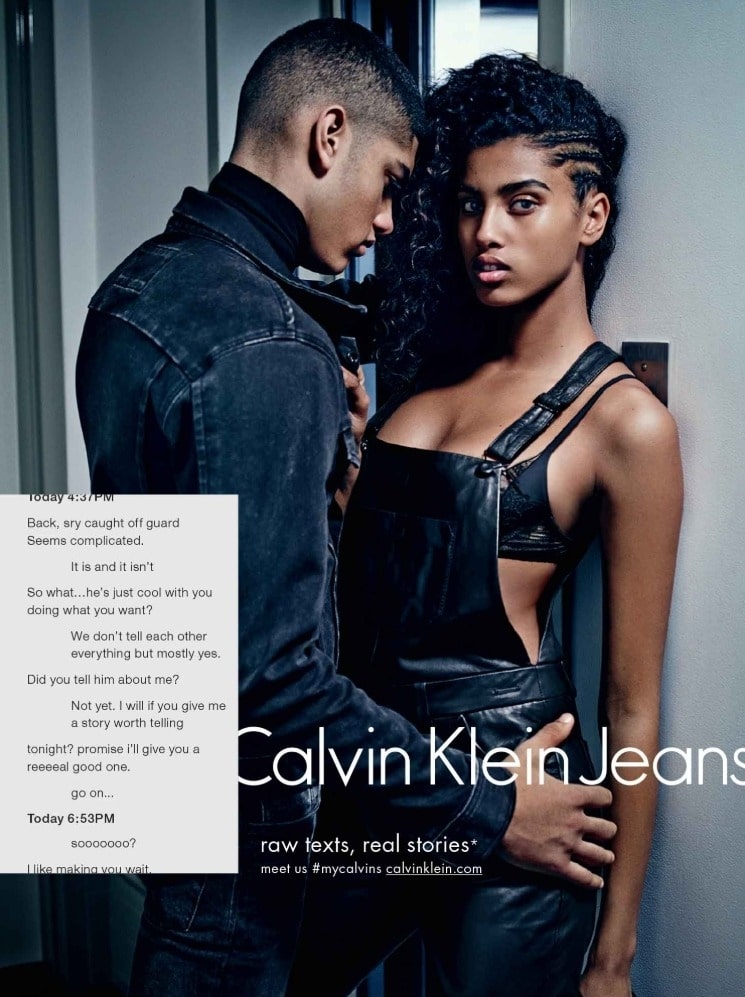
During its #MyCalvins 2015 campaign, the brand used sexting - a provocative virtual language as the theme for advertising. Photos of people of different sexes are covered with messages about nudity, cheating, and threesome. Near the bottom, you can see the campaign tagline “raw texts, real stories” - implying that the messages are inspired by real people and events.
Melisa Goldie, Chief Marketing Officer of Calvin Klein said they wanted to show how consumers communicate and date in the digital age. And they wanted to highlight the truth about modern dating with all the freedom and instantaneous nature. The campaign was considered a message about open relationships, complex sexuality, and modern love.
The ad was featured in large LED billboards in major cities around the world. And, not surprisingly, it stirred up quite a lot of controversy.
2014 CK One - 20th anniversary campaign
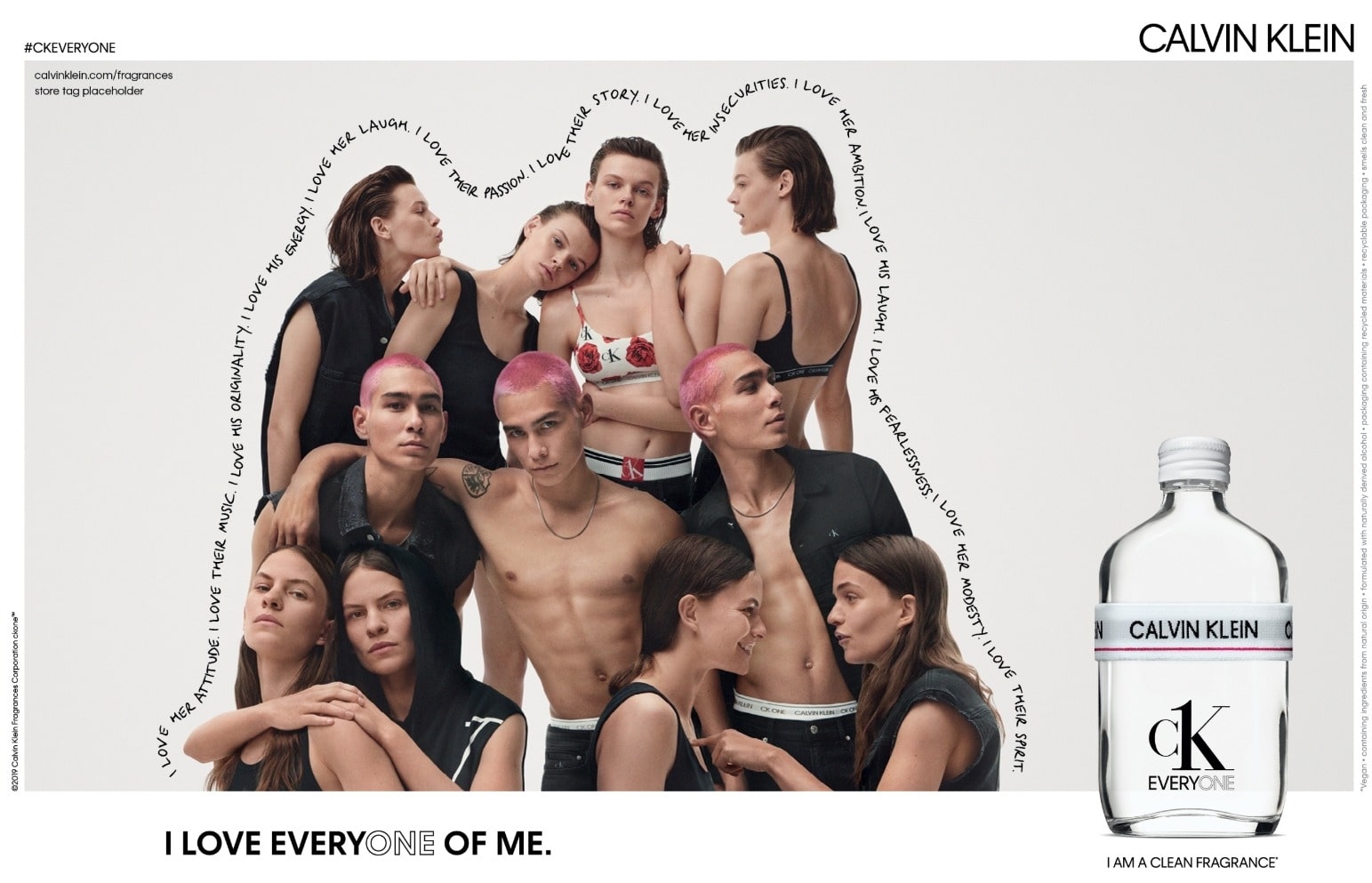
Calvin Klein released a video campaign to celebrate its 20th anniversary, CK One, on YouTube on June 30, 2014, followed by a TV commercial. A printable version of the campaign has also been released, featuring self-contained collages of influential people who participated in the campaign. The video does not include the text, until the final shoot, in which the hashtag #ckmeforme and the Tumblr page for the campaign are displayed. The video featured male and female social influencers and targets the younger Mill Years demographic, 18-25.
For consumer participation, the campaign includes the hashtag, #CKmeforme, to encourage audience participation and engagement with the campaign’s influencers. A Tumblr page is also created, where influencers post content and audiences can like, comment and repost content.
Through the Tumblr page, fans found CK One Snapchat account, while others found it through influential personal social channels. On Snapchat, content will disappear within 24 hours, but users were able to view posts from the Snapchat campaign during that period. On Tumblr, users can like posts from the Tumblr campaign page, as well as repost them on their own Tumblr blog. On Twitter, users can forward or like tweets from their official Twitter account, as well as other user’s Twitter pages.
2015 #MyCalvins campaign
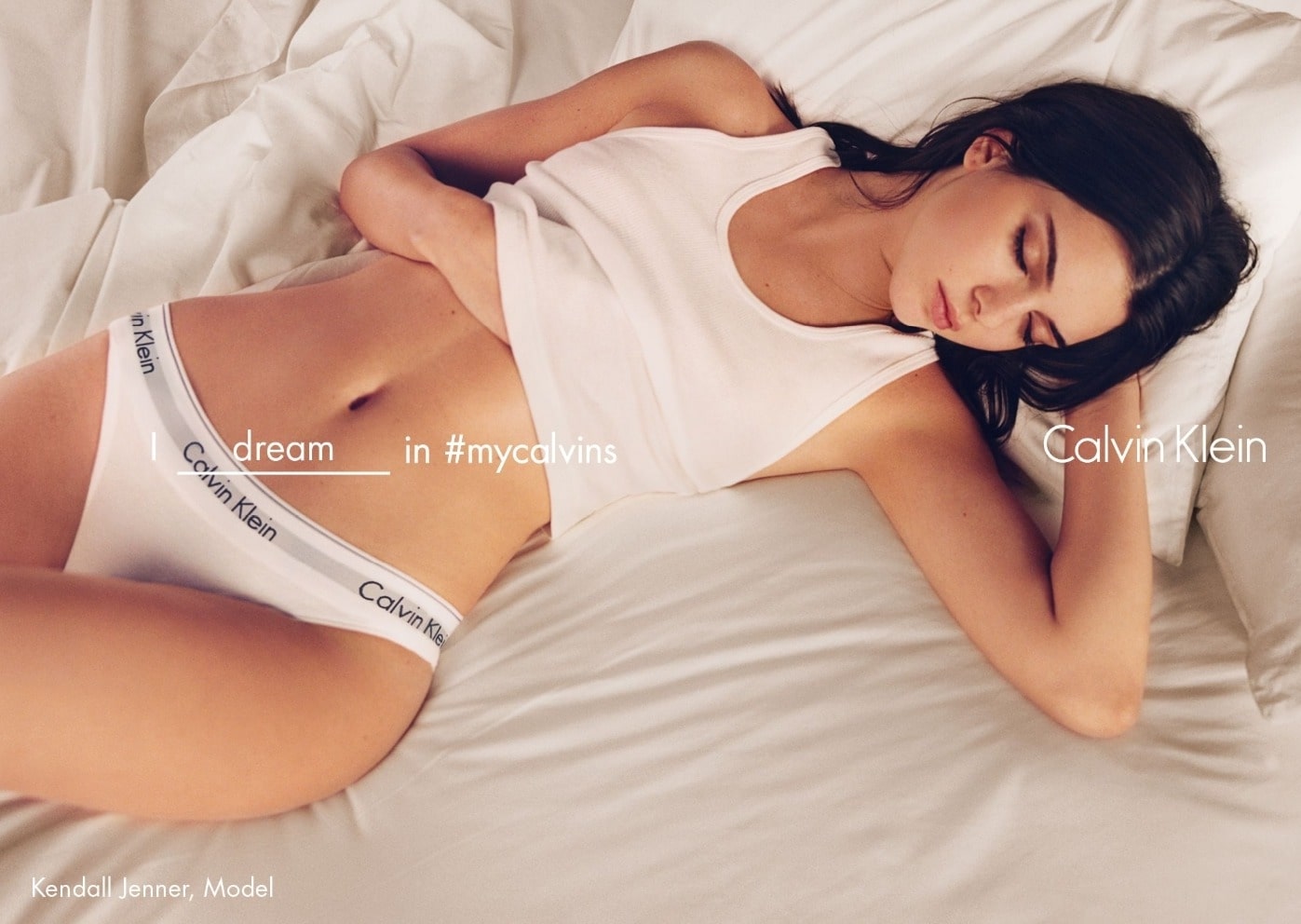
Calvin Klein released his most recent campaign, #MyCalvins, on Youtube on January 6, 2015. The video features singer Justin Bieber and model Lara Stone. Since the release, the video has earned more than 9.2 million views, 23,000 likes and 4,000 dislikes. A print campaign with Bieber was released after the video’s premiere. The video was merely shot in black and white and had no text until the end, where #mycalvins appeared on the screen, followed by the Calvin Klein Jeans logo and a link to calvinklein.com.
A hashtag, #MyCalvins, is incorporated into a campaign to engage the audience. The campaign video combines stories about self-expression, sexuality and pop culture and targets young Millennials aged 18-25, with singer Justin Bieber as a social influencer. In the video description, it also encouraged the audience to join the campaign by displaying their own #MyCalvins
Look on social media. After the release of the video campaign, Calvin Klein released a micro website, where the best user-generated content was recognized by the brand.
After launching the #MyCalvins campaign with Bieber, Calvin Klein continued to build this campaign by collaborating with models, movie stars, musicians and social influencers, using the phrase, I __ in #mycalvins. The campaign was on various social platforms, but the brand has used Instagram as the main platform to broadcast the campaign.
Related posts:
- Dove Marketing Strategy
- Maybelline Marketing Strategy & Ads
- Zara Marketing Strategy
- Colgate Advertising Strategy
What you can learn
Here is a quick recap of what you can learn from Calvin Klein advertising strategy:
- Don’t be afraid to use provocative campaigns if they suit your brand
- If you encounter controversy, keep your opinion and represent the bold character you have
- Social media and influencers are power tools to get your message across.
Are you ready to be bold and iconic like Calvin Klein? Share your brand’s advertising strategy in the comment section below! Thanks for reading, and best of luck on your journey to be a unique brand on the market!
New Posts






